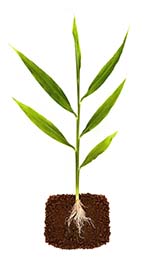 There really is an amazing variety of essential oils out there. Essential oils are extracted from the roots, bark, heartwood, seeds or fruits, leaves and even resins of various plants. In the interest of continuing to be a comprehensive resource on essential oils, we’ve included a brief list of the essential oils we sell organized by plant part used.
There really is an amazing variety of essential oils out there. Essential oils are extracted from the roots, bark, heartwood, seeds or fruits, leaves and even resins of various plants. In the interest of continuing to be a comprehensive resource on essential oils, we’ve included a brief list of the essential oils we sell organized by plant part used.
Bark: Essential oils extracted from tree bark often have an earthy or spicy aroma and usually come from trees whose bark contains high levels of volatile oils, such as the cinnamon tree.
Essential oils: Cassia, Cedarwood, Cinnamon Bark.
Berry or Fruit: Some plant products that we think of as seeds, such as caraway and coriander, are technically berries or small fruits. In essential oil manufacture, these fruits are frequently dried and then steam distilled to produce an oil.
Essential oils: Allspice Berry, Black Pepper, Caraway Seed, Coriander, Juniper Berry.
Flowers: Undoubtedly the most famous types of essential oils are those derived from flowers. Widely used in perfumery and spa treatments, flower-based essential oils include such aromatic powerhouses as rose, jasmine, and lavender oil. This category also includes some entries we normally don’t think of as flowers at all, such as clove, which is actually a type of flower bud.
Essential oils: Clove Bud, Chamomile (German), Chamomile (Roman), Geranium, Helichrysum, Hops, Lavender, Jasmine, Magnolia, Myrtle, Neroli, Rose, Ylang Ylang.
Heartwood: The richest of woody scents is derived from distilling the heartwood of trees with aromatic properties. Heartwood-derived oils typically are very grounding and calming, suitable for use in meditation or for easing states of nervousness.
Essential oils: Camphor, Cedarwood, Palo Santo, Rosewood, Sandalwood.
Leaves and flowering tops: This is the largest category of essential oils, as most aromatic plants contain essential oil glands in their leaves. Many Mediterranean edible herbs, such as oregano, basil, and bay laurel, release essential oils from their leaves when heated, which suggests that cooking may once have been the earliest method of essential oil extraction.
Essential oils: Basil, Bay, Bay Laurel, Catnip, Cinnamon Leaf, Citronella, Clary Sage, Cypress, Eucalyptus, Fir Needle, Geranium, Hyssop, Lemongrass, Marjoram, Melissa, Mugwort, Myrtle, Niaouli, Oregano, Palmarosa, Patchouli, Pennyroyal, Peppermint, Petitgrain, Pine Needle, Radiata, Ravensara, Rosemary, Sage, Spearmint, Spruce, Sweet Annie, Tea Tree, Thyme, Verbena, White Sage, Wintergreen, Wormwood, Yarrow.
Peel: Essential oils extracted from citrus fruits are in a class of their own: too delicate for steam distillation, citrus oils are extracted from the rind of the fruit by compressing it in a method called cold extraction or cold pressing.
Essential oils: Bergamot, Blood Orange, Grapefruit, Lemon, Lime, Mandarin, Sweet Orange, Tangerine.
Resins: Some plants produce gummy exudates known as resins to protect themselves from extreme temperature changes and predatory insects. Often, these natural resins yield essential oils with health benefits for humans as well. Resin-based essential oils include famous Biblical commodities such as labdanum, frankincense, and myrrh.
Essential oils: Elemi, Frankincense, Labdanum, Myrrh .
Roots: Roots anchor the plant in the ground and help support its structure; it makes sense that oils distilled from roots have similar supportive and grounding properties for the human psyche. Root-based essential oils can add substance and balance to an oil blend, and are commonly used in contemplative practices.
Essential oils: Ginger, Spikenard, Vetiver.
Seeds: After leaves, seeds were probably one of the earliest flavoring ingredients used in cooking, as well as being a vital part of herbal medicine. Seeds are frequently crushed to begin the release of their aromatic compounds, and then steam distilled.
Essential oils: Angelica, Anise, Cardamom, Carrot Seed, Fennel, Nutmeg, Star Anise.
Of course, this list is not meant to be comprehensive—it would take a whole book, or possibly several, to give you a complete guide of all the essential oils on the market. By providing a guide to our essential oils according to plant part used, we hope to cover the most popular and therapeutically useful essential oils, while also giving our customers a deeper appreciation of the plants that form an integral part of aromatherapy.
